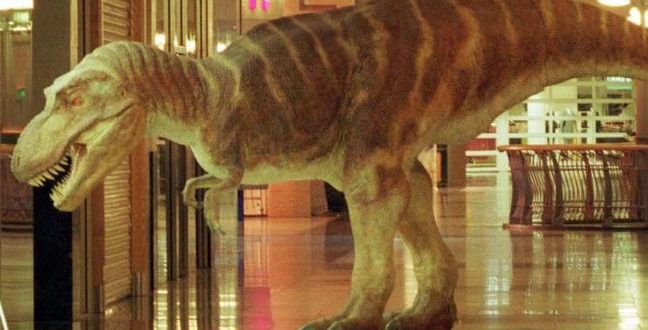Researchers in rural Argentina found themselves in one misfortune to another in order to bring a new species of dinosaur in paleontology. Considering what they had to go through, it seems that the name is apt: Gualicho, the word for “curse.”
Introducing Gualicho shinyae, a 450kg, bipedal theropod that featured a pair of short arms with two fingered claws on each. This fearsome, polar bear-sized creature is similar to the T. rex in this regard, but it sits on a separate branch of the family tree, which means this creature’s unusual limbs evolved independently (that is, parallel evolution), and was not a trait that was handed down from a common ancestor. Small arms, it appears, was a thing among certain bipedal carnivores during the Late Cretaceous, and for reasons that aren’t entirely clear.
Gualicho is classified as an allosauridae, which describes medium-to-large carnivorous theropods, and it was distinct from other dinosaurs that lived near it.
“Gualicho is kind of a mosaic dinosaur, it has features that you normally see in different kinds of theropods,” noted study co-author Peter Makovicky, who works out of the Field Museum in Chicago. “It’s really unusual — it’s different from the other carnivorous dinosaurs found in the same rock formation, and it doesn’t fit neatly into any category.”
Like the T. rex, this dino featured forelimbs the size of a human child’s. The discovery of Gualicho doesn’t explain why certain carnivores featured such tiny arms, but it does strengthen the hypothesis that the trait evolved independently numerous times.
As for this newfound dinosaur’s distinctive name, shinyae comes from its discoverer, Akiko Shinya, while Gualicho is derived from “Gualichu”, a spirit revered by Patagonia’s Tehuelche people.
Así @PLOSPaleo le daba la bienvenida a #Gualicho, nuevo dinosaurio carnívoro argentino pic.twitter.com/2v4w6M3Oi1
— Federico Kukso (@fedkukso) July 13, 2016
Agencies/Canadajournal
 Canada Journal – News of the World Articles and videos to bring you the biggest Canadian news stories from across the country every day
Canada Journal – News of the World Articles and videos to bring you the biggest Canadian news stories from across the country every day



